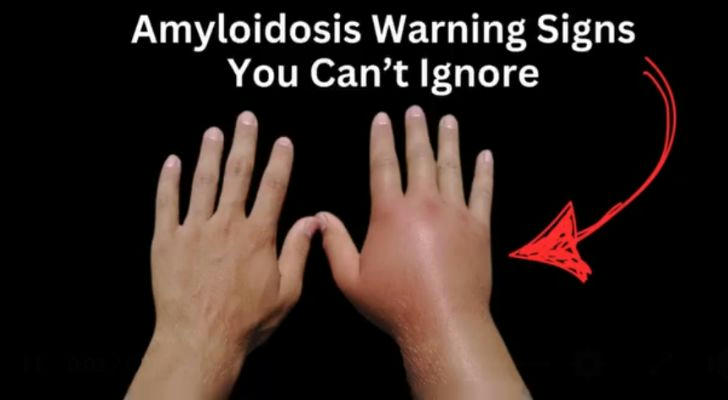Amyloidosis Warning Signs: Recognizing Symptoms Before It’s Too Late
Amyloidosis is a rare but serious disease caused by the buildup of abnormal proteins called amyloid fibrils in organs and tissues. These deposits disrupt normal function and, if untreated, lead to irreversible organ damage. Early detection is critical, yet symptoms often mimic common conditions, delaying diagnosis. Here’s how to identify the warning signs and act swiftly.

What Is Amyloidosis?
Amyloidosis occurs when misfolded proteins clump together, forming amyloid deposits that infiltrate organs such as the heart, kidneys, liver, nerves, or digestive system. There are over 30 types, including:
AL (Primary) Amyloidosis: Linked to bone marrow disorders.
ATTR (Hereditary or Wild-Type): Affects the heart and nerves.
AA (Secondary): Caused by chronic inflammation (e.g., rheumatoid arthritis).
Early Warning Signs by Organ System
Symptoms vary depending on which organs are affected. Key red flags include:
1. Cardiac (Heart) Symptoms
Shortness of breath (even with minimal activity).
Swollen legs/ankles (fluid retention from heart failure).
Irregular heartbeat (arrhythmias).
Fatigue due to reduced cardiac output.
Why it’s missed: Often mistaken for age-related heart disease or hypertension.
2. Kidney Involvement
Foamy urine (excess protein leakage).
Swelling in face/hands (nephrotic syndrome).
High blood pressure resistant to medication.
Why it’s missed: Lab tests for proteinuria are required for confirmation.
3. Neurological Signs
Numbness or tingling in hands/feet (“glove-and-stocking” neuropathy).
Dizziness upon standing (autonomic neuropathy).
Carpal tunnel syndrome (early ATTR amyloidosis).
Why it’s missed: Symptoms overlap with diabetes or vitamin deficiencies.
4. Gastrointestinal (GI) Issues
Chronic diarrhea or constipation.
Unintentional weight loss (malabsorption).
Enlarged tongue (“macroglossia”) causing speech or swallowing difficulties.
Why it’s missed: Misattributed to IBS or aging.
5. General Systemic Symptoms
Easy bruising (amyloid weakens blood vessels).
Purple patches around the eyes (“raccoon eyes”).
Voice hoarseness (vocal cord infiltration).
High-Risk Groups
While amyloidosis can affect anyone, certain populations face elevated risks:
Age: Most cases occur in people aged 50–80.
Chronic diseases: Multiple myeloma, tuberculosis, or autoimmune disorders.
Genetics: Family history of ATTR amyloidosis.
Diagnosis: Why Early Action Matters
Amyloidosis is confirmed through:
Biopsy: Fat pad, bone marrow, or organ tissue analyzed for amyloid deposits.
Blood/Urine Tests: Detect abnormal proteins (e.g., serum free light chains).
Imaging: Echocardiograms, MRI, or nuclear scans (e.g., PYP scan for ATTR).
Delayed diagnosis worsens prognosis: Median survival without treatment is 12–18 months for cardiac AL amyloidosis.
Treatment Advances
AL Amyloidosis: Chemotherapy + stem cell transplants.
ATTR Amyloidosis: Gene-silencing drugs (e.g., patisiran) or stabilizers (tafamidis).
Supportive Care: Dialysis, heart failure management.
When to See a Doctor
Seek immediate evaluation if you experience:
Multiple unexplained symptoms across organ systems.
Family history of amyloidosis or heart failure.
Persistent symptoms unresponsive to standard treatments.
Conclusion
Amyloidosis is a stealthy disease, but recognizing its warning signs can save lives. If you or a loved one exhibits overlapping symptoms—especially heart failure, neuropathy, or kidney issues—push for specialized testing. Early intervention can slow progression and improve quality of life.
Key Takeaway: Trust your instincts. If something feels “off,” advocate for a second opinion or referral to a specialist.
